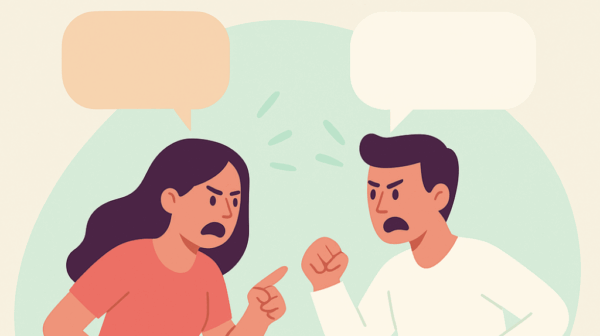
It was a bright, cold day in April, and the blank page stared back at you. The cursor blinks, daring you to type something—anything—but your mind races faster than your fingers. Where do you begin? How do you wrangle that big idea swirling in your head into coherent sentences, let alone an entire book?
You’re not alone. Most writers, even the greats, have been where you are—at the edge of possibility, staring into the void of the blank page. The good news? You’ve already taken the first step: you want to write a book. That spark, no matter how faint, is the beginning of your own book-writing journey.
This guide is here to help you navigate that journey, step by step. Together, we’ll break down the daunting process into manageable parts, from sparking your first idea to conquering writer’s block, crafting early drafts, and refining your masterpiece. By the end of this blog post, you’ll have the tools, confidence, and momentum to turn that intimidating blank page into the opening line of your story.
Ready to get started? Let’s banish the blinking cursor and get those words flowing.
From ‘Boy Wizard’ to ‘Hunger Games’: Finding Your Big Idea
Every great book begins with a single spark—a big idea that refuses to let go. Whether it’s a boy wizard discovering his destiny or a dystopian world where survival is a game, your story starts with a concept that excites you. But what if your idea is still hiding in the shadows? Don’t worry—this is where your writing journey truly begins.
Start by asking yourself: What story do I want to tell? Are you drawn to writing fiction with fantastical worlds, historical details, twisty thrillers, or heartfelt romances? Maybe your big idea lies in nonfiction—a self-help book to inspire others or a memoir sharing your unique experience. Whatever it is, let your interests guide you.
If you’re stuck, try brainstorming or freewriting. Jot down whatever comes to mind, even if it seems silly. Sometimes, ideas are like puzzle pieces that only make sense later. Writing tools like Evernote, Google Docs, or even the trusty Microsoft Word is perfect for organizing these scattered thoughts into something cohesive.
Your Publishing Journey Awaits – Start NowTake inspiration from successful authors. J.K. Rowling famously dreamed up the main character of Harry Potter while on a train, while Stephen King often finds his ideas in ordinary moments with a twist of the macabre. Your big idea doesn’t need to be fully formed right now—it just needs to get you excited enough to begin writing.
Remember, every good writer and great story starts with the very idea that wouldn’t leave its writer alone. Find yours, and let it guide you.
Daily Word Counts and Coffee Shops: Writing Sessions That Stick
Writing a book is a marathon, not a sprint, and the only way to reach the finish line is by showing up daily. The secret? Consistency. Setting clear writing goals, researching some writing tips, carving out dedicated writing time, and finding your perfect writing space can make all the difference between dreaming about a book and actually finishing one.
Start with a realistic daily word count. Some writers prefer to aim for 500 words, others for 2,000—it’s not the number that matters but the habit. Small, consistent progress is more sustainable (and less terrifying) than sporadic bursts of inspiration. Remember, even Stephen King started with one word at a time.
Next, design your ideal writing space. Do you thrive in a cozy nook surrounded by books, or does the hum of a coffee shop ignite your creativity? Wherever it is, make it yours—comfortable, inspiring, and free from distractions.
Consistency also comes from scheduling regular writing sessions. Whether it’s early mornings, late nights, or lunch breaks, block out time when your creativity is sharpest. And during these sessions, silence your internal editor. Early drafts are meant to be messy; they’re a playground for ideas, not a polished final product.
Writer’s block? Show up anyway and start writing, even if all you manage is a sentence or two. Over time, the habit of writing daily will chip away at resistance, and those small efforts will add up to something big: your book.
The Rough Draft Roadmap: Don’t Get Lost
Think of your outline as a roadmap—it doesn’t have to detail every twist and turn, but it should prevent you from wandering off into the creative wilderness. Whether you prefer a loose sketch or a detailed plan, outlining is the foundation of your book-writing process.
Some writers swear by traditional methods like index cards pinned to a corkboard, while others embrace digital tools like Scrivener for organizing chapters, scenes, and notes. Either way, your outline should give you just enough direction to keep moving forward without boxing in your creativity.
You don’t want to be the writer who spent weeks crafting a 30-page outline only to abandon it halfway through chapter two because their characters “had other plans.” Learn that lesson now—outlines are flexible, not carved in stone.
For fiction, focus on your main character’s arc and the big plot twists that will keep readers hooked. Who is your protagonist when you start writing a book, and who will they become by the end? How do your supporting characters and subplots fit into the larger story?
For nonfiction books, the key is logical structure. Break your big idea into clear chapters or sections, each with its own purpose. Think of it as building blocks for your argument or narrative.
A rough draft roadmap doesn’t mean perfection; it just keeps you from getting hopelessly lost. Whether you’re planning a complex epic or a concise self-help book, a flexible outline ensures your writing process stays on track—without strangling your creativity.
Typing Through Terror: The First Draft
The hardest part of writing a book isn’t finishing it—it’s starting. The blank page is intimidating, but the only way to defeat it is to dive in. Write that first chapter, even if it feels clunky. Type out your opening line, even if it reads like the literary equivalent of “It was a dark and stormy night.” The first draft isn’t about perfection; it’s about progress.
Take comfort in knowing that even the greatest writers produce messy first drafts. Anne Lamott famously calls them “sh*tty first drafts,” and she’s absolutely right. J.K. Rowling rewrote the opening chapter of Harry Potter and the Philosopher’s Stone multiple times before it clicked. The point is to write—not to overthink.
You’ll have days when the words flow like water and others when stringing together a single sentence feels like pulling teeth. That’s normal. Perseverance is the secret weapon of every successful author. Push through writer’s block by setting small, attainable goals. Write the first scene, first page, first paragraph, or even the first sentence. The key is to keep going.
Your Publishing Journey Awaits – Start NowWriting tools can make the actual writing process easier. Use Microsoft Word or Scrivener to organize your chapters, track changes, and store notes. Prefer simplicity? A plain text document will do just fine.
Remember, the first draft is where you explore your character development and story, discover new ideas, and even surprise yourself. It won’t be perfect—it isn’t supposed to be. It’s a foundation, and you can’t build your finished book without it. So take a deep breath, embrace the chaos, and just begin.
From Messy Draft to Finished Book: Editing Like a Pro
Congratulations! You’ve conquered the majority of actual writing for your first draft. Now comes the less glamorous but utterly crucial step: editing. If writing is the art of putting words on the page, editing is the science of making them shine.
Start by accepting this hard truth: your early drafts will need work—sometimes a lot of work. Complete rewrites? Probably. Spelling errors and clunky sentences? Definitely. But this is all part of the editing process, where your messy draft transforms into a polished book.
Begin refreshing your writing skills by reading through your manuscript with fresh eyes. Note areas where the story drags, characters fall flat, or your writing style feels off. Then tackle issues systematically. Tools like Grammarly and ProWritingAid can help clean up grammar, spelling, and readability, but they’re no substitute for human feedback.
Speaking of feedback, beta readers are invaluable in a writing project. These early test readers can spot plot holes, confusing sections, or pacing issues you might have missed. When you’re ready for a deeper dive, consider hiring a professional editor—they’re worth every penny.
Patience is key. Remember, even New York Times bestselling authors go through multiple rounds of editing. Your book doesn’t have to be perfect right away; it just needs to keep getting better.
Lastly, don’t forget the nitty-gritty: proper formatting, consistent style, and a keen eye for those pesky typos. Editing may not be the fun part, but it’s the step that separates a decent draft from a finished book you can be proud of. Stick with it—it’s worth the effort.
Your Publishing Journey Awaits – Start NowSelf-Publishing vs. Traditional Publishing: Which Path Is Yours?
You’ve edited your book to near perfection—now what? It’s time to decide how to share your masterpiece with the world. The two main paths—self-publishing and traditional publishing—each have their own perks and pitfalls.
Traditional publishing involves landing a literary agent and submitting your manuscript to publishing houses. The pros? You gain access to experienced editors, established distribution networks, and professional marketing support. The cons? The process is competitive, time-consuming, and comes with less control over your book’s creative aspects. If you’re going this route, crafting a standout query letter is essential. Highlight your book’s hook, its target audience, and why you’re the perfect author for it.
Self-publishing, on the other hand, puts you in the driver’s seat. You control everything from the cover design to the price, and you keep a larger share of the profits. However, this freedom comes with challenges—you’ll need to handle (or outsource) editing, design, and marketing yourself. However, some self-publishing platforms like Spines take care of all of those details allowing you to have more creative control without being overwhelmed by the process. Even still, marketing strategies are key here: invest in social media campaigns, connect with book bloggers, and engage with your audience on platforms like Goodreads.
Whichever path you choose, understanding your target audience is crucial. Are you into writing books for fantasy fans, self-help enthusiasts, or history buffs? Tailor your approach to their preferences.
There’s no right or wrong answer—just the one that aligns with your goals and vision. Whether you’re pitching to traditional publishers or hitting “publish” on Amazon, your book’s journey to readers starts with this important choice.
The Last Page Is Just the Beginning
You’ve written, edited, and maybe even published your book—so now what? Here’s the truth: the last page isn’t the end of your writing journey; it’s just the beginning. Successful writers know that finishing one project is the launchpad for the next. Whether you’re dreaming of a sequel, a new genre, or a completely different book idea, the key is to keep going.
Remember the steps that got you here: starting with a big idea, setting writing goals, sticking to a routine, and embracing the editing process. These aren’t just one-time tasks—they’re lifelong habits that will fuel your writing career.
Writing a book is a monumental achievement, but it also teaches you skills that go beyond the page: discipline, creativity, and perseverance. As you close this chapter (pun intended), reflect on how far you’ve come. And don’t let fear or doubt stop you from starting again.
The journey to continue writing only makes sense when you take that first step—and keep taking the next one. So, finish writing, celebrate your accomplishment, and then, when you’re ready, begin again. Your story isn’t over yet. In fact, it’s just getting started.
Spines will guide you through every chapter of your story—whether you’re brainstorming your next big idea or perfecting your final draft. Let’s write something incredible together.
Your Publishing Journey Awaits – Start Now







